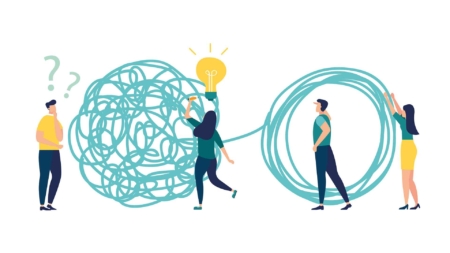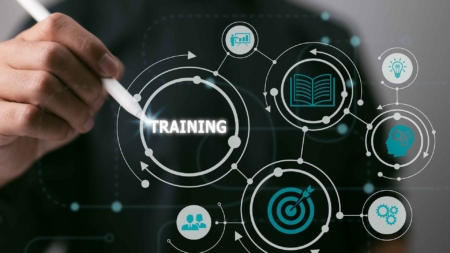Continuing with the ideas I had shared in my previous post, Building a Culture of Learning and Engagement, we need to find processes for learning and engagement that engage the mind-body-spirit of our employees. This would help to make employee engagement not just an intervention but a way of life in our organizations.
I received some excellent comments from readers to that post, and now I’m sharing some ways in which I believe we can achieve our goal:
-
-
-
- Creating a purpose driven work-force
- Including conversational processes in Learning
- Having a ‘Jugnu’ approach
-
-
-
-
- Creating a purpose driven work-force: Purpose can be described as the reason for our existence. Organizations are not always purpose driven but they are definitely vision driven and have clear goals and strategies. As part of alignment, we do help people see how the organizational vision connects to their role.Suppose we flip this approach. Supposing we start with each employee instead. Get each employee to identify their personal purpose and values – what matters to them – why do they exist – what makes them wake up with a spring in their step – what makes their eyes shine? Questions that perhaps they have never considered.Jobs don’t really require an answer to these, do they? Yet, a purpose statement helps us to understand the reason we exist, live and work. If we facilitate this discovery for employees, we build a sense of confidence and self-discovery in them. Only then should we link it with their organizational roles and the vision of the organization. We at Pragati Leadership strongly believe that this would enable a realizing of potential and power within people and they would then be able to be better engaged and involved with themselves and the organization. If I don’t understand myself and what I want, how will I understand what the organization aspires to achieve and my role in the same?Giving people the freedom, resources and autonomy to be able to pursue their personal purpose at work (along with their organizational role) would help to bring out both positive energy and involvement. Hindustan Petroleum has done this in a remarkable way with great success.
- Including Conversational Processes in Learning: Most of our OD and HR interventions are highly structured and well planned. They enable sharing of knowledge and building of skills.Yet it is informal conversations that lead to collaboration, connection and co-creation. Informal conversations lead to sharing of ideas, best practices and innovation. Organizations need to create spaces and forums to operationalize this. Two such conversational processes are: Open Space Technology (OST) and World Cafe. What is common among both of these is that a theme is chosen and people voluntarily sign up for areas or issues they are passionate about. This leads to learning and passionate ownership of actions. Many companies have experimented with regular monthly or quarterly forums where OST is introduced to employees . This has led to new ideas being generated, and more importantly, people coming forward voluntarily to take responsibility for their implementation. These processes are sustainable, cost effective and require no external intervention. These are critical ongoing OD interventions that can build engagement and learning.
- Having a Jugnu Approach: The word ‘Jugnu’ means ‘fireflies’. Fireflies glow in the dark. Where there is darkness, they show the light. In an organizational context, Jugnus refers to those people who show more learning luminosity than others. In order to enhance the vibrancy, learning and luminosity of an organization, the HR/L&OD team can identify a cadre of employees called ‘Jugnus’ or ‘I-Catalysts’. These are people who are internal change agents for learning and engagement. They are naturally interested in sharing, learning, have a positive and optimistic approach and are natural communicators and magnets for others. These people can be identified through seeking nominations and selected using a check-list. With some degree of I-Catalyst training, they can become the extended arm of HR/L & D in order to catalyze learning among employees. I-Catalysts would typically be line managers .They would help to promote learning among employees by organizing and facilitating informal learning e.g. brown bag workshops, best practice sharing, debates, peer assist sessions, films, storytelling etc. Research has shown that the trend in learning is that organizations are moving away from formal training to informal learning where they don’t need to be in a classroom for picking up new skills etc. I-Catalysts can spearhead this process of informal learning within the organization.
-
When a culture of purpose, conversation and learning gets created, it automatically leads to greater employee engagement and involvement. People’s strengths and talents are used better. There is higher ideation and innovation. People meet across departments and silos and there is a naturally higher collaboration. There is less fear and more joy. More importantly employee engagement is no longer an HR intervention, rather it becomes each person’s priority. When this happens, the goal of the HR department has truly been achieved.
Are some of these ideas adopted at your organization? I would love to hear readers’ experiences and share knowledge so that we all learn and grow.
by Anu Wakhlu





